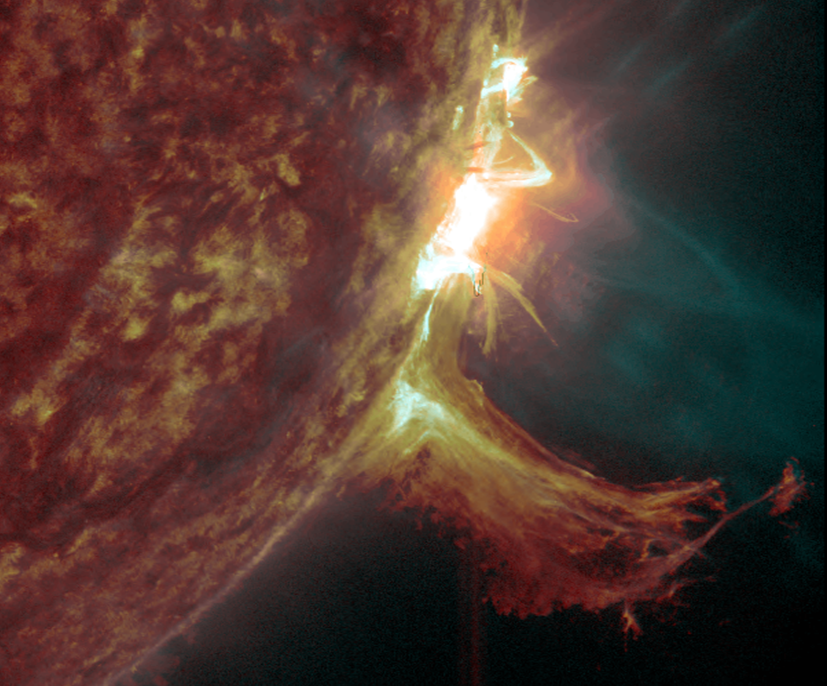Last week's highlight certainly was the M7.3 flare that was produced by the sunspot complex NOAA 2172/2173. This flare peaked on 2 October at 19:01UT, and was preceded by a long duration M1.5 flare peaking at 17:44UT in the same area near the southeast solar limb.

The flare, and especially its intensity, came rather as a surprise. Though the area had produced various M-class flares during the previous weekend, it had quieted down over the next few days. In fact, no flare was recorded for 36 hours prior to the 2 October events. The two sunspot groups had also reduced in sunspot area and magnetic complexity, though the proximity near the solar limb made an accurate assessment of the latter more difficult.

This movie shows the evolution in white light and the magnetogram of the Sun from 27 September till 2 October. It is followed by the outlook of the flares as seen in H-alpha (lower chromosphere) and in AIA304 (transition zone). Then comes a zoom in the combined light from the AIA 304 and 131 filters showing also the hotter areas of the flare (blue). The final clip shows the associated coronal mass ejection, which was directed to the southeast and away from Earth.

Credits - Data and imagery for the movie clips were taken from the GONG H-alpha network, SDO, SOHO/LASCO, STAFF and Helioviewer.
 |
 |





